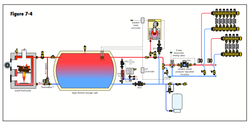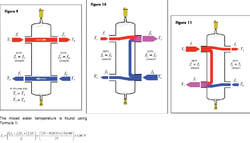If you had your storage fully heated, say to 180 degrees or more, and were away for a few days, say four, what temp would you anticipate finding your storage water at upon your return. Assuming you were heating your home in your absence with your back-up furnace/boiler, your tank is reasonably well insulated, and not outside in the cold, or even if it is in an unheated space. Conditions vary, what what would you expect in your situation with your storage tank size?
I guess I am wondering how quickly a fully heated, reasonably insulated tank will cool off to below 140 degress , if unused a few days. Don't know if there's a difference between how fast a 300, 500, or 1000 gallon tank might cool.
Mike
I guess I am wondering how quickly a fully heated, reasonably insulated tank will cool off to below 140 degress , if unused a few days. Don't know if there's a difference between how fast a 300, 500, or 1000 gallon tank might cool.
Mike



